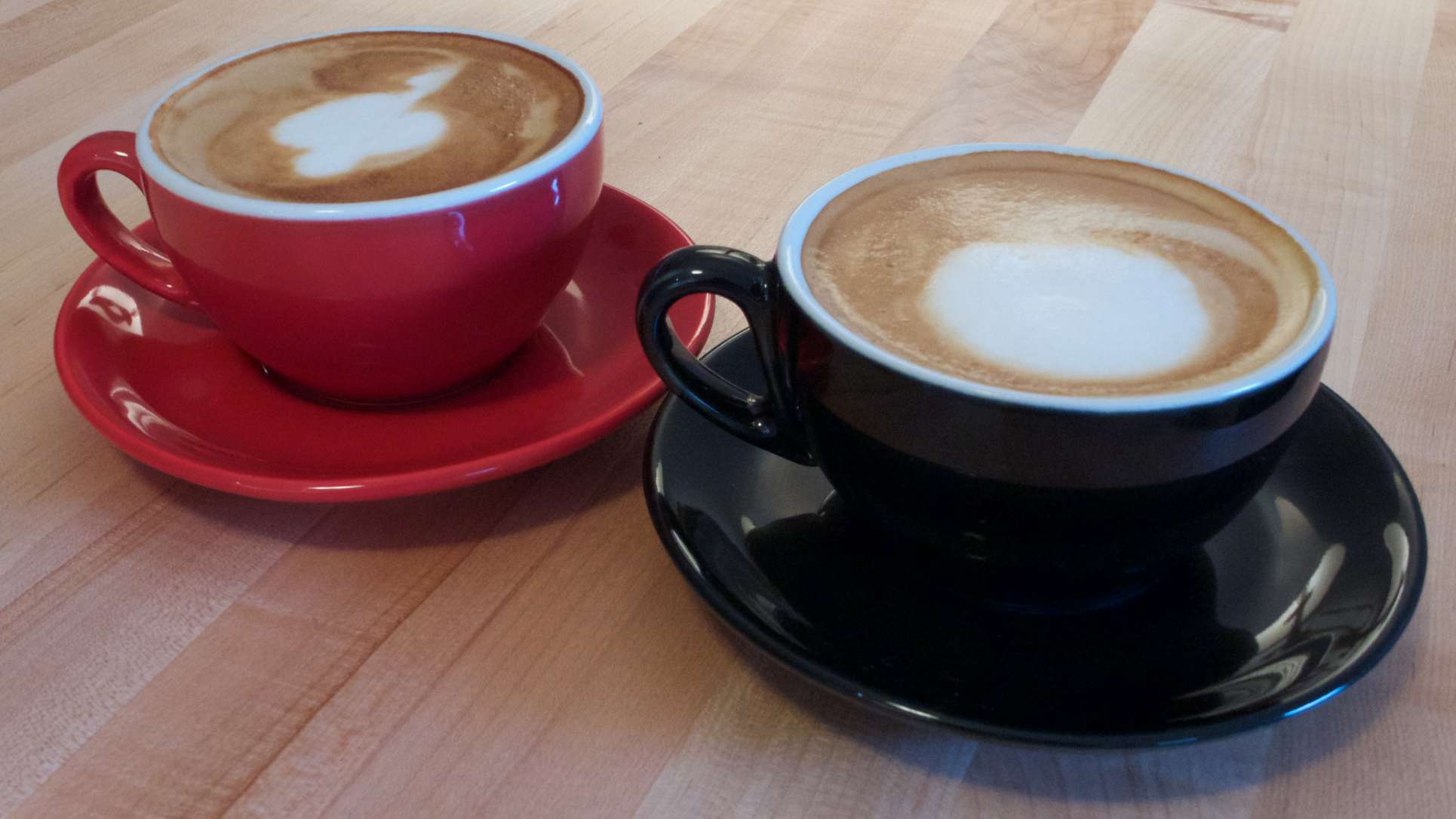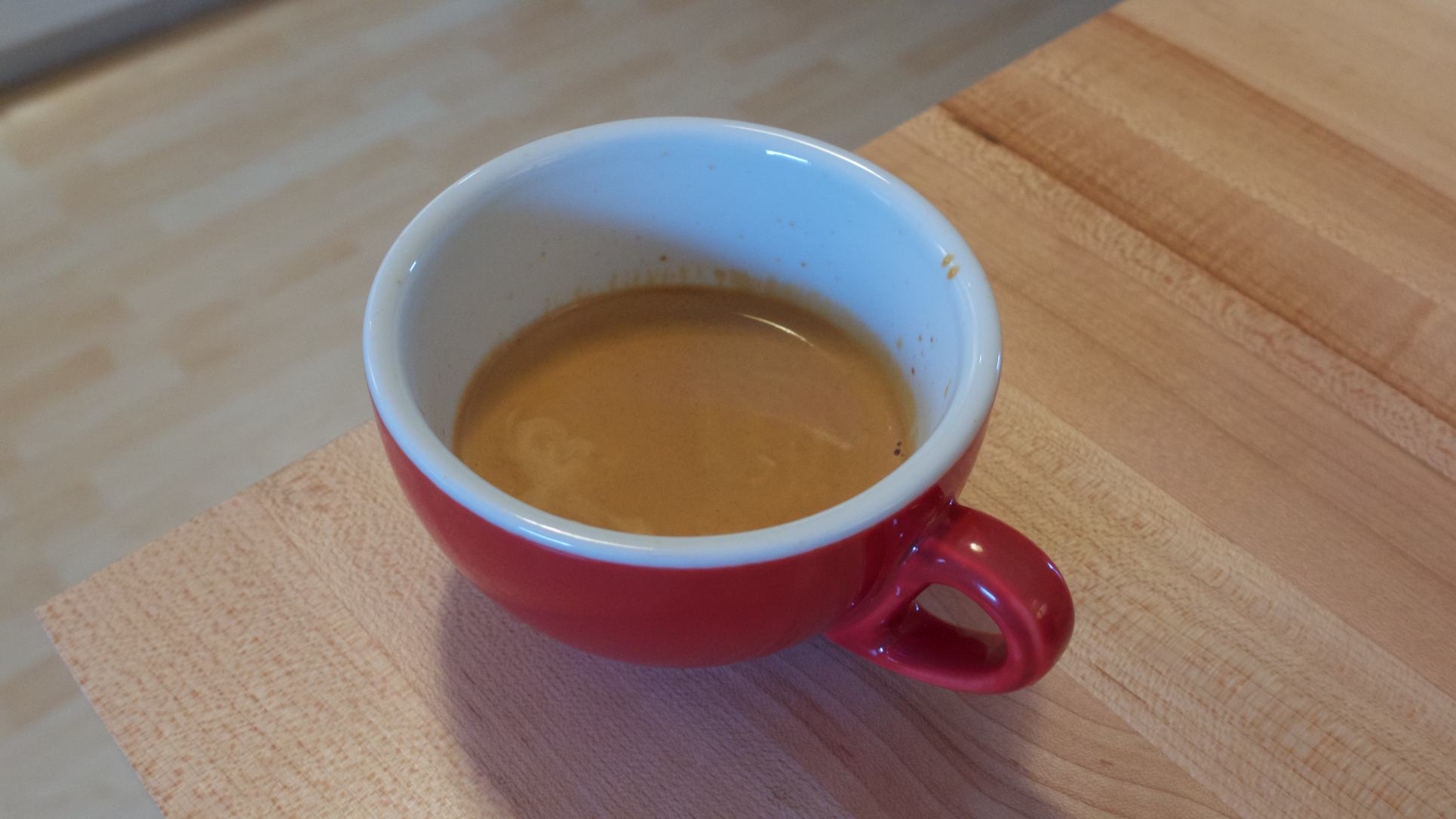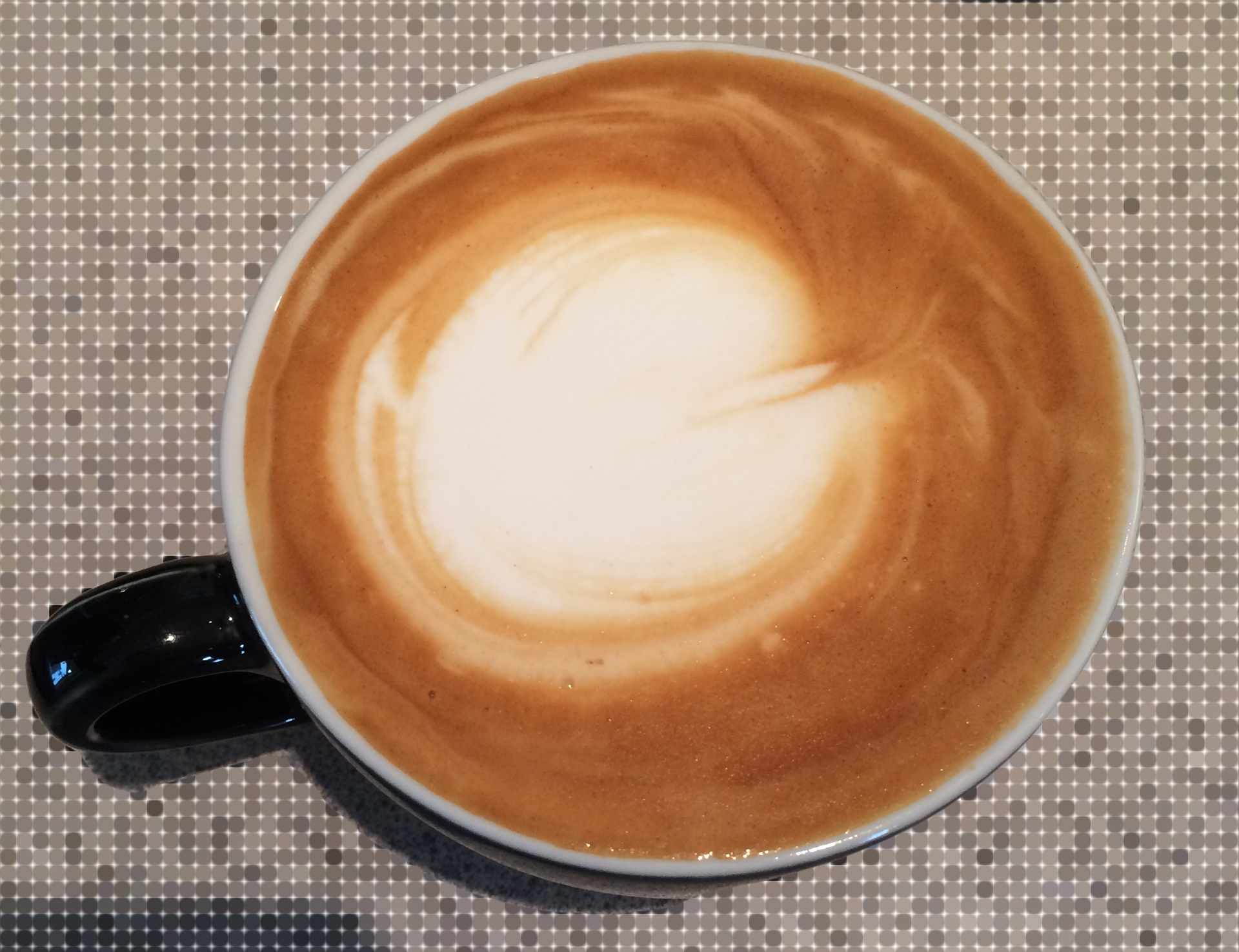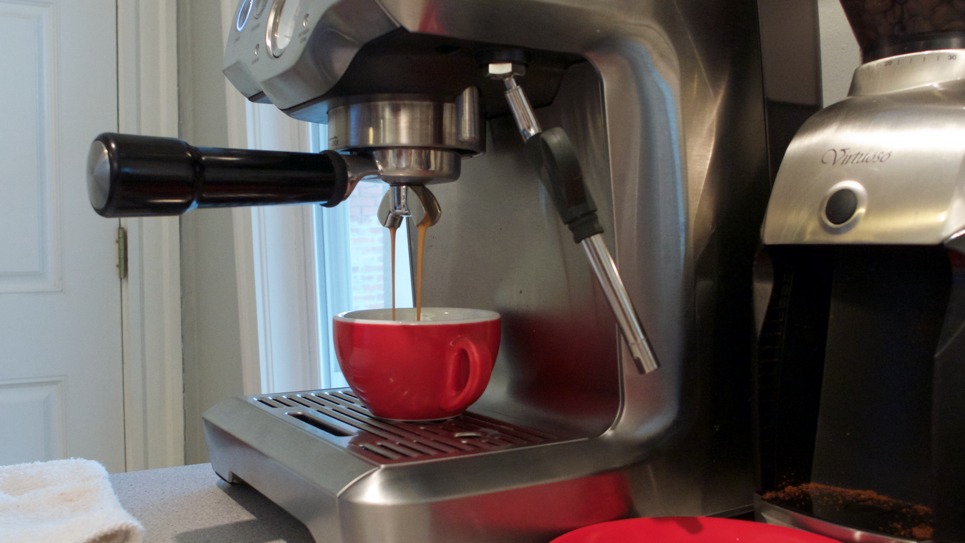Notes of marshmallow and chocolate.
I have a restaurant idea, and it goes something like this. I shop for whatever looks good at the market the day before or the morning of a meal and make interesting and (hopefully) delicious foods that come to mind. We make an announcement about each day’s meals, serving breakfast, brunch, lunch, and/or dinner at approximately reasonable times that one may expect those meals until we run out. Customers come in and order by specifying how many meals they’d like. There are no decisions to make other than whether they would like the recommended coffee or tea pairing.
(Perhaps it’s a good idea that I not quit my day job any time soon…)
Coffee will feature prominently at this restaurant because Nathan and I love coffee. As of the last few years, cafés in the Boston area started making wonderful flat-white style cappuccinos. While there exists some disagreement over the exact definition/preparation of a “flat white,” the typical proportions that I’ve observed from coffee shops that I enjoy are approximately 1.5 to 2 ounces of espresso paired with about 4.5 ounces of steamed milk. These cappuccinos are subtly sweet (the internet claims that this comes from the milk steaming process, which caramelizes the sugar in milk), but lack the milk foam cap common to traditional cappuccinos. Each time that Nathan and I find ourselves in a new city, we track down a nearby café to try and learn about their special combination of beans and preparation techniques.

No to-go cups here: we already have the cups for our restaurant!
I can’t claim to have a refined enough palate to distinguish strawberry notes from cherry or citrus when I drink a flat white, or to imagine in my head what a roast described as “almond and raspberry” will taste like before actually tasting it (and typically afterward I would argue that the coffee taste nothing like what was described). But, over the last few years of frequenting cafés that serve flat whites (though typically the menu will only list a “cappuccino”), I have had a fun time experiencing and being surprised by how different a café’s cappuccino can taste from day to day. Some days, I’ll taste something earthy and nutty, and the coffee will linger pleasantly for a few seconds. Other days, a coffee can come across so unexpectedly “bright” that the almost-sour flavor makes me pucker. I prefer the former to the latter, and I have observed that the former flavors tend to be correlated with non-fruit descriptions such as “chocolate” and “marshmallow,” and that those coffees tend to come from South American countries.1
I know immediately whether I like a particular coffee or not, but I know very little about why. A bit of digging around on the internet reveals that many factors can affect the taste and “crema” (the layer of richly colored, light oil that contributes many components to a particular bean’s unique taste and frequently acts as a canvas for latte art) of an espresso shot, ranging from the freshness of beans to the size of coffee grounds to the timing of the espresso extraction itself. The engineer and scientist in me wanted to learn more, so Nathan and I purchased a Breville BES840XL semi-automatic espresso machine and started experimenting.
On our espresso machine, we can control the water temperature, pre-infusion time and extraction time of an espresso shot. There is an unscientific pressure gauge on the front of our machine that indicates when the extraction pressure is within “espresso range” (probably between eight to ten bars), but we can neither directly observe nor control the extraction pressure. The first few times that we tried to pull an espresso shot, we ran into two large problems. Initially, we didn’t use a fine enough grind, and the water ran right through the grounds and into the cup. The first few shots tasted barely of coffee and had no crema. After adjusting the grind size (we learned to only do this when the grinder is running because beans stuck between the burrs will prevent the size adjustment from taking effect if the grinder is off), we still needed to use the “double-wall” filter to create enough pressure for crema. The double-wall filter artificially increases the extraction pressure by severely reducing the exit points that the espresso can exit through. These shots had only a thin layer of crema, and they tasted extremely sour probably due to some combination of not fine enough grinds, old beans, and the double-wall filter (we didn’t experiment long enough with this setup to do any more diagnoses!).

The highly desirable layer of crema on top of a shot of espresso: producing crema requires about nine bars of pressure, which is approximately nine times the force that air exerts at sea level
After several more weeks of trials with a new burr grinder, the single-walled filter, and beans with roast dates ranging from a few days to a couple of weeks in the past, we’ve learned the following lessons:
The grinder and grind size matter tremendously. The grind size, the amount of beans used, and the tamping force used to level and compact grounds can create a wide range of pressure scenarios leading to either bland shots with little to no crema or extremely sour shots. We use about 20 grams of coffee grounds and grind to a fineness that yields about a 20 second espresso shot. If we’ve done everything “correctly,” the shot transforms in color from an opaque, dark brown to a slightly transparent blonde (almost like the color of an early roux).
Many adjustments to the taste of an espresso shot can be made in real-time, during the extraction process, by observing the color of the shot as it pours into the cup. For example, espresso shots that taste bitter can be made less so by stopping the extraction process earlier in its transition from opaque, dark brown to transparent blonde. As we only make one or two flat whites for ourselves each day, I just make a mental note of what the coffee tastes like on one day and then accordingly modify what color to look for during the next day’s extraction.
The taste of coffee beans changes quickly after the roast date. Specifically, some notes simply drop out as time goes on. After about three weeks, one or two dominant notes persist. The resulting espresso and cappuccino is by no means bad to drink, but it is different. And less nice.
Milk is hard to foam well. Steaming milk not only changes its perceived sweetness, but also changes the texture of a drink. Steamed milk with large foam bubbles loses its texture quickly, leading to a thin-bodied drink that is distinctly less satisfying than one created from steamed milk with smaller bubbles. The steamer wand can incorporate large air bubbles or small air bubbles (along with heating milk), or it can just heat milk; each action generates a distinct sound. While it’s fun to watch milk double or triple in volume, unfortunately, the flat whites that I like don’t require that much additional milk volume!
Although I’ve read elsewhere that espresso shots should not be pulled without adequately warming the portafilter (the handle/basket combination that holds the coffee beans) and the coffee cup, I’ve forgotten to do both on a few occasions and haven’t noticed a tremendous difference.
These are the lessons that we’ve learned to date about espresso and flat whites. Hopefully by the time we open our restaurant, our understanding and technique will be a bit more complete and consistent. For example, here’s a latte heart-turned-giant-peach…

Yes, the latte art needs some more practice.
1One cappuccino that I had at 3 Little Figs stands out as an exception to my general preference for beans with earthy flavors. Its espresso was described as containing hints of “white grapes,” and the coffee completely changed flavors after I bit into a chocolate chip cookie and took a sip. I remember being amazed at how many different tastes could come from a chocolate chip cookie that I had eaten hundreds of times before simply by pairing the cookie with this fantastic drink.
